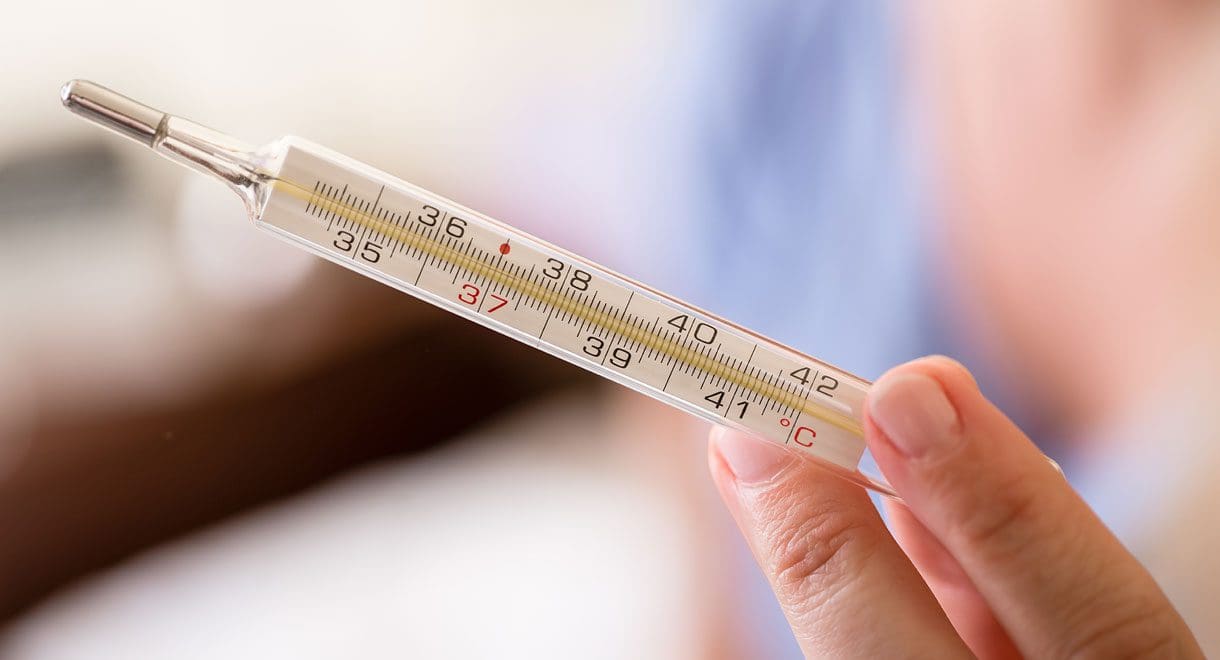How to check your thyroid health at home
By naturopath Margaret Jasinska
Do you suspect you may have a poorly functioning thyroid gland? A blood test for thyroid hormones is the ultimate way to find out, but did you know there’s a simple test you can easily do at home?
More than 50 years ago, a doctor named Broda Barnes found that the basal (resting) body temperature is a good indicator of thyroid function. If your thyroid gland is sluggish, this can cause a reduction in body temperature.
According to the Australian Thyroid Foundation, one in seven Australians has a thyroid condition. The most common symptoms of a sluggish thyroid include inability to lose weight, fatigue, low mood, dry skin, scalp hair loss and fluid retention. If any of these symptoms are familiar, you may want to try this test.


Instructions for performing the thyroid temperature test
- It is preferable to use a mercury thermometer. Clean the thermometer with cool, soapy water. Gripping the end opposite the bulb, shake the thermometer down until it reaches 35 degrees Celsius (95 degrees Fahrenheit) or lower. Place the thermometer beside your bed within easy reach, so that you can pick it up while still lying down the next morning.
- The next morning, as soon as you wake up, place the thermometer in your armpit, so that the bulb is in your armpit. Make sure that there is no clothing between your armpit and the thermometer. Hold the thermometer there for ten minutes and continue lying still.
- Write down your temperature. You must do this for four consecutive days.
Important tips
Your temperature must be taken as soon as you wake up in the morning; before you have moved out of bed, eaten or had anything to drink. This way you will be recording your lowest temperature of the day. Menstruating women must perform this test starting on the second day of their cycle; this is because ovulation produces a rise in body temperature and would not give a true reading. Post menopausal women and men can perform this test at any time.
Do not do this test when you have an infection, injury or any other condition that can produce a mild fever.
A normal axillary (armpit) body temperature for adults is between 36.5 and 36.7 degrees Celsius; in the Fahrenheit scale this is 97.7 to 98.06 degrees. If your body temperature falls below 36.5 degrees Celsius or below 97.7 degrees Fahrenheit, you should see your doctor for further tests on your thyroid.
This method is not always 100 percent accurate and you should not rely on it solely. If your basal body temperature is outside of the normal range you should speak to your doctor about the full range of thyroid tests you need. See our book Your Thyroid Problems Solved for detailed information about thyroid tests and natural, effective treatment for thyroid conditions.
Low body temperature doesn’t always indicate a thyroid problem. Other causes of low body temperature include iron deficiency, adrenal gland exhaustion, being underweight or mitochondrial disorders (common in chronic fatigue syndrome and autoimmune disease).


Here are some other tips for keeping your thyroid gland healthy
- Consume adequate high quality protein. The thyroid gland requires the amino acid tyrosine in order to manufacture thyroid hormones. Tyrosine is found in protein rich foods such as red meat, fish, poultry, but also almonds, avocados, bananas and pumpkin seeds.
- If you have a sluggish thyroid gland, avoid consuming large quantities of goitrogens. These are substances that can suppress the thyroid gland if consumed in very large amounts. Foods rich in goitrogens include raw vegetables such as cabbage, broccoli, cauliflower and Brussels sprouts; as well as soy, millet, peanuts and corn. Cooking these foods is advisable and inactivates the majority of goitrogens.
- The majority of thyroid problems are caused by an autoimmune condition; meaning the immune system is responsible for causing the thyroid to malfunction. Research has shown that gluten intolerance can be a triggering factor in autoimmune thyroid problems. Gluten is a protein found in wheat, rye, spelt, kamut and barley. Many thyroid patients benefit from following a gluten free diet.
- Ensure you have a healthy liver. The liver is the main site of conversion of thyroid hormone (T4) into its more active form (T3). A sluggish or fatty liver may impair the efficiency of this process.
- Ensure your diet contains adequate levels of beneficial fatty acids, as found in oily fish (salmon, sardines, tuna, anchovies, mackerel), raw nuts and seeds, cold pressed olive oil, avocados and organic coconut oil. These fats can reduce inflammation and improve the health of thyroid cells.
- Minimise your exposure to the heavy metals mercury, cadmium and lead, as they can interfere with the manufacture of thyroid hormones.
- Minimise your exposure to pesticides and insecticides, chemical antiperspirants and deodorants and other toxic chemicals.
- Get your doctor to examine your thyroid gland for lumps, bumps or enlargement. If any lumps are found you need to ask your doctor for an ultrasound scan of the thyroid gland.
- If you are fatigued, ask your doctor to do a blood test for thyroid function.
- Make sure you obtain adequate levels of nutrients required for thyroid health. They include vitamin D, selenium, iodine and zinc and are combined in Thyroid Health capsules.









Leave A Comment